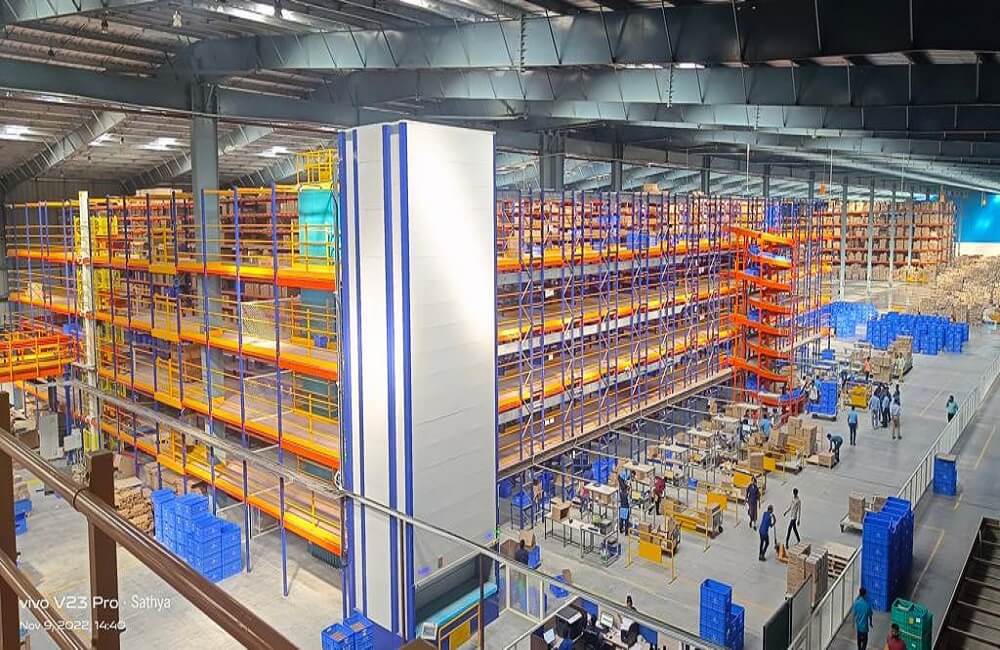The logistics sector has been one of the fastest-growing domains of the Indian economy.
In the recent years, the logistics sector has been one of the fastest-growing domains of the Indian economy. In the last five years, the sector’s revenue has grown at a Compound Annual Growth Rate (CAGR) of 15%, and it is likely to rise even faster in the next five to come. The future expansion of the logistics industry is predicted to be driven by a rapid increase in Indian customers’ reliance on e-commerce, as well as the growth of the Small and Medium Enterprises (SMEs) and Business-to-Business (B2B) segments and government effort to enhance exports. The Centre is committed to improving the efficiency of India’s logistics business and has launched a National Logistics Policy to cut logistics costs. While the government has aggressively assisted businesses, more such measures are needed. With the Budget approaching, the industry expects the government to unveil measures to spur growth.
Some of the measures the industry is looking for, include:
• Quicker development of infrastructure: The sector hopes the budget will include steps to boost the execution of infrastructure projects such as logistics parks, Dedicated Freight Corridors (DFCs), and cold storage. To increase India’s competitiveness, the budget should prioritise dedicated freight corridors across the country and incentivise DFCs to decongest roadways to cut logistical costs and improve efficiency. The government could create specific zones for logistics parks in districts with suitable infrastructure and connections and capital incentives for logistics companies building warehouses in small towns. A focus on infrastructure development through dedicated allocation to the logistics sector will allow for increased investments in this area. Imported equipment is primarily used in the cold storage business. A drop in import levies encouraging the use of low-cost Indian-made equipment, would boost the sector.
• Implementation of the National Logistics Policy: There is a need for ample allocation of funds for the execution of National Logistics Policy (NLP) recommendations to transform the shipping and logistics sector. While the industry has praised the NLP, it also expects the government to step up the implementation of policy recommendations. The budget should fund several initiatives across the logistics ecosystem under the National Logistics Policy, with the impact visible over the following 12 to 18 months. The budget should prioritise the development of physical asset standards and service benchmarks to accelerate the implementation of the NLP. The government should prioritise aligning stakeholders, such as state governments, and promptly execute the plan outlined in the NLP. A budget is required to kick-start the project and guarantee it moves at the correct speed.
• Rapid Unified Logistics Interface development: Logistics companies are eager to use the Unified Logistics Interface Platform (ULIP), which was outlined in the National Logistics Policy. They have pushed the government to hasten its development and integration. Transparency and visibility are also required, which will be delivered once the Unified Logistics Interface Platform is integrated into the system. Building an open-source system with a standard interface will also aid in the development of the platform promptly. Incorporating ULIP will encourage collaboration between organised and unorganised industry actors and minimise the time required to get travel permits and customs clearances, enhancing efficiency.
• Electric Vehicles for cargo transport: Concessions for developing EV infrastructure, such as charging stations, hasten the adoption of electric vehicles for commercial reasons, easing last-mile delivery issues. As we transition to an electric future through electric vehicles, the government may consider offering subsidies to purchase electric automobiles. It will enable several small logistics-based start-up enterprises to acquire electric vehicles and accelerate the changeover.

Co-founder & CEO, Shypmax
Conclusion
With the impending budget, the Indian logistics sector is anticipating and emphasising the benefits of digitalisation that these initiatives will bring. It will simplify, improve, mobilise, and strengthen the shipping and logistics processes. To supply timely and cost-effective services, the sector demands a strong multimodal integrated logistics network, extensive warehouse links covering urban and rural hinterlands, and a robust digital backbone. The industry anticipates that the pace of logistics infrastructure development will accelerate in 2023 under the stated institutional framework, with an adequate capital push planned in the Union Budget 2023-24.



